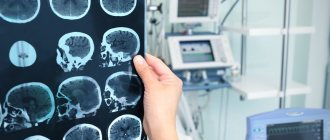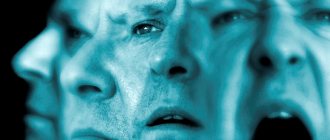Medical information is reliable Checked by Eremin Alexey Valentinovich
An irresistible craving for psychoactive substances is called dependence syndrome. The diagnosis is made based on a variety of established signs and symptoms. This is not a death sentence; visiting Dr. Isaev’s Clinic will allow you to undergo timely rehabilitation and return to normal life. For each patient, this process takes a different amount of time, it all depends on the length of time you have been taking the substances and the individual characteristics of the body.
In the International Classification of Diseases 10, addiction syndrome is officially called drug addiction. The condition is expressed in persistent addiction to psychoactive substances. A person dependent on them loses the meaning of life. All his thoughts begin to revolve around the next dose. All thoughts are built around the question of how to get a “high” and bring yourself into a state of unbridled euphoria.
Dependency syndrome: the essence of the concept
For the patient, this condition can result in disastrous consequences. He first partially and then completely loses the ability to control himself and his actions, his emotional background and the criticality of his thinking. In ICD-10, addiction syndrome is defined as a complex of behavioral, physiological and cognitive phenomena in which the use of narcotic and other types of psychoactive substances occupies a central place in a person’s value system.
Relatives, friends, work colleagues, interests and activities that were previously important to the patient fade into the background. After some time, they almost completely disappear from his life. The main characteristic of the syndrome is a strong, sometimes irresistible desire to consume alcohol, drugs and other substances that alter consciousness.
Doctors focus on the fact that people with addiction syndrome, even after a long period of abstinence, return to using psychoactive drugs, and their symptoms become more pronounced. People who do not have this diagnosis can take these substances without such a pronounced clinical picture, provided that the use is episodic and there is no overwhelming desire to achieve euphoria with the help of drugs or alcohol.
Prevention measures
Preventing and combating the development of addiction to psychotropic substances is a complex task. Prevention includes the following steps:
- The primary one is the tightening of legislative regulation of the turnover of alcoholic products. Promoting a healthy lifestyle from an early age. Carrying out administrative and sanitary educational activities in educational institutions. Adequate education of children.
- Secondary – timely initiation of treatment for an already formed addiction. Individual relapse prevention with the help of a doctor with the support of family members, with whom they also carry out therapeutic work.
- Tertiary – supportive treatment aimed at preventing the most dangerous (irreversible) damage caused by long-term intoxication.
All activities, except for primary care, are carried out under the supervision of a narcologist and psychotherapist. Treatment is always comprehensive, taking into account a person’s personal characteristics. With early treatment, the prognosis is favorable.
Types of addiction
Treatment of addiction syndrome at Dr. Isaev’s clinic involves an integrated approach. Within its framework, the specialist works with the patient himself and his close circle to avoid the risk of relapse. This term means an obsessive attraction that pushes the patient to a certain type of activity. With the help of drugs, the addict achieves a state of euphoria, calmness and pleasure, and reaches a certain level of psychological comfort. It is different for each person, it all depends on his age, social status, the presence of intrapersonal conflicts, problems in the family and at work.
There are two types of dependence:
- Physical.
It is characterized by long-term use of psychoactive substances, the main components of which are integrated into the metabolic processes of the body. Dependence is considered physical if withdrawal symptoms occur after stopping the drug. This condition causes severe discomfort in a person; at the physiological level, he experiences real agony. Its intensity depends on the type of substances taken, as well as the type of pathological craving - for drugs, alcohol, drugs, food. Modern drugs can cause classic “withdrawal” after several doses. It’s easier to get rid of physical addiction; just go through a detoxification procedure and flush the body with IVs.
- Psychological.
This type of addiction is also called emotional; a person wants to engage in a certain type of activity that previously brought him pleasure. This process is far from natural; the emotions and experiences obtained as a result of possessing an object of desire are very strong, colored in positive tones. They are often followed by a decline, the person experiences a depressive mood, he does not see the meaning of life in anything other than this type of activity. In this contrast, the effect of taking drugs becomes especially strong. Non-chemical addiction syndrome includes addiction to computer games, the Internet, slot machines and other activities.
How psychoactive substances hack the reward system
Psychoactive substances (surfactants) act either directly on the dopamine system, or indirectly through other receptor systems (our internal opiate, cannabinoid, etc.), but the result is the same - their use causes the release of neurotransmitters (primarily dopamine), causing euphoria at times more usual “physiological” stimuli. Our brain is extremely “curious” (dopamine is responsible for this). In the case when the brain encounters a certain new powerful stimulus, the circumstances conducive to this penetrate into long-term memory almost unhindered, and the individual willingly repeats the actions that previously led to powerful positive emotions (what, for example, happened with the mouse that quickly memorized in which corner is the treasured “pleasure” pedal). There is an expression that surfactants (which are such a powerful irritant) literally “hack” our long-term memory the first time, freely penetrating it and exploiting our evolutionarily formed learning programs.
Mental craving as an element of the syndrome
A person’s thoughts are constantly concentrated on the desired object or type of activity. The anticipation of owning it lifts the mood, and if this is not available, the patient feels dissatisfaction with himself and the world around him, and depression. The treatment process for this disease in most cases ends successfully, and the person returns to normal life. If relapses occur, their cause is precisely the mental craving for psychoactive substances, alcohol or other activities that cause short-term euphoria.
The style of behavior changes radically, very often the dependence syndrome is accompanied by objective manifestations. A person consciously or unconsciously tries to escape reality, to resolve conflicts in the only available way. This behavior falls into the category of destructive; strong emotions bring pleasure only to the addict, but not to those around him. It destroys all social ties and leads to problems in the family and at work.
Life expectancy of an alcoholic
A person’s life expectancy depends on a huge number of factors, among which alcohol is clearly not included in the “healthy” category. The World Health Organization (WHO) has found that harmful drinking leads to the following consequences:
- Cause of 5.3% of all deaths.
- The development of more than 200 types of health problems - from injuries to severe chronic diseases.
- Early mortality in the age group 20-39 years is 13.5%.
- Indirect connection with HIV infection, tuberculosis, STDs (skin and venereal diseases).
- Involvement in criminal and antisocial circles.
Addiction causes harm not only to the consumer himself, but also to society as a whole.
The average life expectancy of an alcoholic is from 35 to 60 years, the data is ambiguous. However, death is usually preceded by severe health problems, personality degradation, and social maladjustment.
Dependency syndrome criteria
The final diagnosis is made by a specialist after a thorough examination of the patient and the necessary diagnostic procedures. There are several criteria; if three or more of them appear simultaneously over a fixed period of time (usually 12 months), it makes sense to talk about dependence syndrome.
The clinical picture of this disease is as follows:
- The process is repeated with a certain cyclicity. A person needs the object of his addiction, while little can stop him. First, an irresistible desire to contact him appears, before which there is a phase of experience and anticipation. After contact, physical and mental relaxation occurs; the duration of this cycle is individual for each patient.
- The desire to gain pleasure from a psychoactive substance becomes irresistible. All thoughts are concentrated around this moment, the person gradually loses connections with others. If someone tells him that he is sick and needs treatment, this causes great aggression. A similar reaction occurs when taking synthetic drugs and non-chemical addictions.
- The patient has difficulty controlling his behavior. He misses the moment when the start and end of use occurs, and often increases the dose.
- Dependency syndrome helps to escape from reality, relax after severe stress, resolve conflicts and forget about your problems. The object becomes very valuable, contact with it leads to the patient sacrificing everything. He may commit illegal acts in order to get money for the next dose or a trip to the casino. Even if this means committing an attack, deciding to steal, or mortgaging a house, the addict will not flinch.
- Constantly increasing the dose of substances to achieve a certain effect. Initially they are smaller, then gradually increase. All alternative types of pleasure disappear from the patient's life.
- Positive emotions can only be obtained through contact with the object of desire. The presence of withdrawal syndrome, accompanied by discomfort, aggression, increased irritability, and an obsessive desire to get rid of this condition.
- Significant problems with your immediate environment. The patient gradually draws everyone with whom he comes into contact into codependent relationships. These are friends, relatives, spouses, parents, work colleagues. Conflicts gradually begin if loved ones begin to focus on the problem.
- Relapses. Even after a long period of abstinence, a breakdown occurs, which leads to habitual behavior.
- Changes at the physiological level. As a rule, they manifest themselves in the form of psychosomatics; a symbiosis of physical and mental problems arises. The patient experiences sleep disturbances, neuroses, and depression, which seriously impair his quality of life.
Dopamine – a learning neurotransmitter
It is noteworthy that the so-called pleasure centers are also responsible for the processes of learning and the formation of long-term memory.
Thus, evolutionarily, dopamine and norepinephrine played a critical role in learning effective survival strategies. For example, what it might have looked like for our distant ancestors - defeated the enemy, received a dose of dopamine, found nutritious food - received pleasure in the form of dopamine, found sweet food - received even more dopamine, successfully reproduced - received even more dopamine.
And thus, the behavior of the individual was reinforced (which is why the system is otherwise called a reinforcement system) the most important behavioral strategies within the framework of preserving life, procreation and accumulation of positive life experience and avoidance of potentially negative situations. But in the modern world, when the problem of survival is not so relevant, self-destructive strategies are often reinforced, for example, a passion for extreme sports or fast driving, excessive overeating, and, unfortunately, the use of psychoactive substances.
Methods of treating the disease
Therapy for the syndrome at Dr. Isaev’s clinic begins with motivating the patient to recover. It is impossible to place a patient in a rehabilitation center without his consent. The legislation of our country allows for compulsory treatment only of certain categories of patients, if there is a corresponding court decision.
The type of drug is important; for example, it is easier to overcome addiction to marijuana than to heroin. There are three stages of the therapeutic process, each of which is mandatory.
- Detoxification with the help of special medications. Decay products and toxic substances are removed from the body, which lead to malfunctions of all organs and systems. Additionally, doctors use sedatives that normalize the general condition and have a calming effect, vitamin complexes to maintain health, and other groups of medications.
- Rehabilitation of drug addicts - involves staying in the center for a certain time, mainly the patient is in contact with a psychotherapist, addiction consultants, addictologists and other mentors.
- Social adaptation has the goal of returning the patient to normal life, giving him the opportunity to look at himself from the outside. Contact with the curator does not stop, which allows you to avoid breakdowns and the return of dependence syndrome.
A person does not always realize what they want from him, the changes in his psyche are so strong. If there are concomitant diseases, an additional course of therapy is prescribed.
Forms of alcoholism
Classifications of alcohol dependence can be based on social, economic and even legal aspects. In medical practice, they mainly use those in which clinical features are of primary importance. There is no single approach, so the tactics of assistance differ in different countries and even clinics.
In the CIS
The staged formation of addiction in the USSR was first described by I.V. Strelchuk (1973). Subsequently, his system was taken as a basis, supplemented and modified. The most complete classification is recognized by N.N. Ivanets (1988), who analyzes the following criteria:
- Stage of dependence: I-III + transitional forms.
- Rate of progression (progredience): low (> 5 years), medium (5-8), high (
- Features of remissions (periods of improvement).
- Form of abuse: isolated excesses, pseudo and true binges, constant drunkenness with varying tolerances, intermittent variants.
- Social and neuropsychiatric consequences.
The final diagnosis must reflect all the features of the disease. Modern classifications also include the social side of addiction, the current state of a person. ICD-10 remains the main medical classifier in the Russian Federation.
Abroad
An analysis of more than 2 thousand questionnaires filled out by members of the AA society (Alcoholics Anonymous) formed the basis for the E. Jellinek classification (according to Jellinek/Jellinek). She describes the following forms of alcohol addiction:
- Alpha alcoholism (not yet a disease). Alcohol is used to situationally alleviate an unpleasant psychosomatic state.
- Beta (still not a diagnosis). Drinking alcohol is associated with the local mentality.
- Gamma. A variant of developing a classic addiction, but with an emphasis on strong drinks. Leads to disruption of social and labor adaptation.
- Delta. There is a constant form of greater mental dependence with wine abuse (typical of France, Greece, Italy).
- Epsilon. A rare type, manifested by cyclical binges.
Foreign typological schemes are more diverse, but are not always applicable in clinical practice. Often, greater importance is attached to external criteria, local customs, and mentality.
The most widely used diagnostic manual in the United States is the DSM-5. Work is underway to implement the updated (11th) revision of the ICD.
What is addiction?
Addiction is an obsessive, pathologically strong desire to perform actions that lead to a certain mental state, most often relaxation, pleasure, and calm. What distinguishes this state from habit is the strength of the need, the inability to do anything else until the desire is satisfied, constant thoughts about the object of addiction, and the unconscious performance of certain actions to achieve a goal.
In addition to changes in mental state, physical symptoms may occur, such as rapid heartbeat, sweating, dry mouth, blurred vision, unsteadiness when walking, and weakness. Physical symptoms are associated with a state of nervous tension in anticipation of the fulfillment of a need or the direct action of the subject of the need, for example, alcohol or a drug.
Consequences of exploitation of the dopamine system
For a number of people with pronounced hedonistic attitudes, the use of psychoactive substances quickly displaces all other pleasures in life, and they begin to prefer the so-called “cheap” pleasures (not in terms of cost, but in terms of costs). A person does not need to make any effort; it is enough to order something, accept it and wait for the effect. In turn, a powerful and effective activator of both the dopamine and endogenous endorphin systems is any physical activity - sports, dancing, swimming, movement in general, but for this you need to make an effort - at least put on a sports uniform, go for a run or walk to the pool /fitness club.
So, let's return to the effect of surfactants on the dopamine system. If, at the first stage of acquaintance with psychoactive substances, a person chooses a “quick win” strategy (we will return to the discussion of these strategies separately) and constantly artificially maintains an increased level of dopamine, then:
· firstly, “dopamine depots” are quickly emptied and, accordingly, the activity of reinforcement centers decreases (which is clearly visible in this fMRI image of the brain of a healthy volunteer, in whom these zones actively “glow” in red, in contrast to the “weakened” yellow zones in experienced dependent people).
· secondly, a structural restructuring of nerve endings occurs at the receptor level - their number changes and sensitivity to dopamine decreases.











